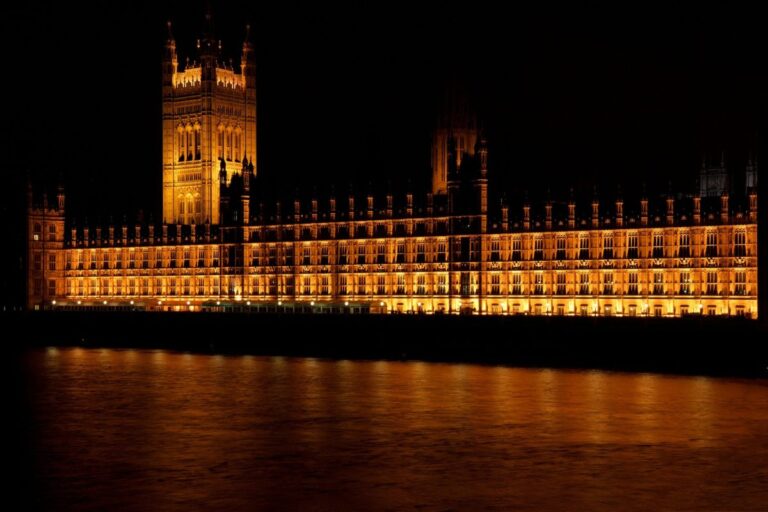Voters will soon head to the polls for a UK general election with the cost of living high on the agenda. Much of what lies ahead for solar and the wider renewable energy industry in the UK could depend on the decisions of the next government – as key net-zero deadlines approach.
British voters will go to the polls on July 4, 2024, marking the end of a British general election campaign in which all major parties have pledged to cut energy bills. Each party has its own vision on how energy policy can support households and businesses during the next parliamentary term, with knock-on effects for sustainable generation. Here’s what’s on offer for solar, storage and the wider renewable energy sector:
Conservative
The Conservatives have led the British government since 2010. In that time, solar capacity in Britain has grown from 25 MW to more than 16 GW, according to figures from the government’s Department for Energy Security and Net Zero.
Conservative spending commitments include the £1.1 billion Green Industries Growth Accelerator. The fund provides grants to companies in the UK’s clean energy and civil nuclear energy supply chain. The Conservatives have also pledged to approve two new fleets of small modular reactors within the first 100 days of the next parliament.
On household bills, the Conservatives have committed to cutting “green levies”. The levies, which make up roughly 8% of UK household energy bills, are used to fund a range of energy policy measures, including Contracts for Difference for solar and wind power, and the Energy Company Obligation programme, which provides financial support to households that invest in energy efficiency measures.
It is unlikely that taxation of residential solar installations will change under the Conservatives in the short term. Value added tax (VAT) for solar panels, heat pumps and other energy efficient improvements was reduced to zero in the previous parliament – a zero rate that will apply until April 1, 2027. VAT for energy efficient improvements will then revert to the reduced rate of 5% – the standard UK VAT rate is 20%.
For storage, the party has pledged to build two ‘carbon capture and storage clusters’ across northern England and Wales, with a second set of projects in the north-east of Scotland and on the east coast of England.
Work
In the polls, Labor is the bookmakers’ favorite to win a majority in the general election. The party has committed to investing directly in renewable energy through its ‘Green Prosperity Plan’. About a quarter of that investment will be funded by a windfall tax on ‘oil and gas giants’, which is expected to raise £1.2 billion a year.
GB Energy stands out as the flagship policy in Labour’s energy proposals. GB Energy, headquartered in Scotland, would operate as a government entity charged with co-investing in clean energy projects alongside the private sector. Labor plans to invest GBP8.3 billion in GB Energy over the five-year term, with GBP3.3 billion expected to go towards funding a new Local Energy Plan, which will provide local authorities and communities with funding to invest in renewable investing energy resources. Further financial support includes a “National Wealth Fund” worth GBP 1.5 billion per year to invest directly in ports, hydrogen and industrial clusters, as well as a new Warm Homes Plan providing grants and low interest loans to support investment in residential solar energy, storage, insulation and related improvements. The Warm Homes Plan is expected to cost around GBP 1.1 billion per year.
Clean energy developers using British workers may also be eligible for the UK Jobs Bonus under a Labor government. The party said it will allocate £500 million a year from 2026 to boost companies offering “good jobs and conditions” with supply chains in industrial and coastal areas, as well as energy communities.
Others
Junior government coalition partners from 2010-2015, the Liberal Democrats’ manifesto includes a series of net-zero pledges, many of which focus on solar energy. The party has said it would deliver a “roof revolution” by expanding incentives for households, including a “guaranteed fair price” for electricity exported to the grid. Other Liberal Democrat policies include a 10-year household upgrade program, starting with free insulation and heat pumps for those on low incomes. The party said it would also reinstate a requirement that every new car or van sold in the UK must be zero-emission from 2030.
Led by broadcaster and Brexit campaigner Nigel Farage, Reform UK has argued that it is better to “adapt to warming” rather than trying to reduce carbon emissions.2 emissions. This position underlies the party’s energy policy. Reform UK has said it would speed up the licensing process for North Sea oil and gas within the government. The party is determined to abolish renewable subsidies and scrap ‘net zero’.
The Scottish National Party – the third largest party in Westminster in the last parliament – is the only candidate in Scotland. It has called for a “social tariff” to make energy bills more affordable for people on low incomes, people with disabilities and older consumers. Funded by general taxes and an obligation on energy companies, those who qualify would pay an energy rate that is lower than the regular rates currently offered.
The Green Party of England and Wales, which has held one parliamentary seat since 2010, has said that all new homes must meet Passivhaus or equivalent standards, and that it would force housebuilders to install solar panels and heat pumps on all new builds where necessary . The party is campaigning for 100 GW of solar energy by 2035, as well as 80 GW of offshore wind and 53 GW of onshore wind in the same time frame.
This content is copyrighted and may not be reused. If you would like to collaborate with us and reuse some of our content, please contact: editors@pv-magazine.com.


